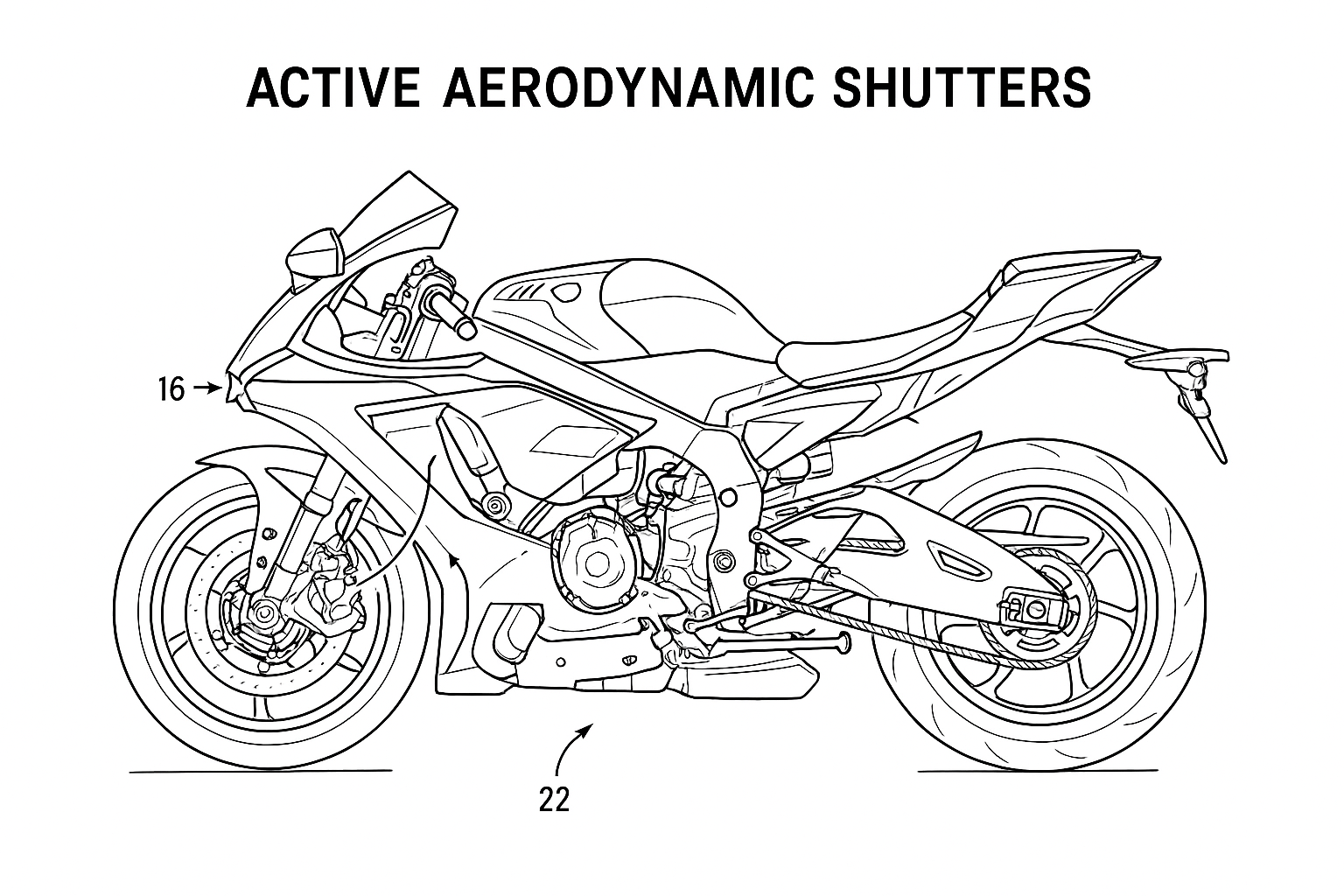Yamaha is preparing to bring the legendary R1 back to public roads. A recent patent leak reveals a new active aerodynamic system that could help the superbike meet strict emission rules while boosting performance.
Read more
The documents show movable shutters in the fairing’s cooling outlets. These shutters use stepper motors and belts for actuation. An ECU decides their position based on coolant temperature, catalyst temperature, ambient air, throttle input, and speed. This keeps the system lightweight and cost-efficient.
Full details
At higher speeds, the shutters close. This reduces drag and allows the bike to hold top speed with less power. The smoother airflow also adds to stability.
More info
The design also improves emissions. The shutters help the catalytic converter heat up faster, which ensures compliance with Euro 5+ standards.
Learn more
Two versions appear in the diagrams: one with a single large outlet on each side, and another with twin smaller outlets. This provides flexibility in balancing cooling and aerodynamics.
Patent breakdown
The ECU can open or close the vents depending on riding conditions. During slow riding or high ambient heat, vents stay open to cool the engine. At high speed, they close to improve aerodynamics. Under hard acceleration, they may briefly stay shut to maximize airflow efficiency before reopening for cooling.
Analysis
Yamaha had stopped selling the road-legal R1 in Europe due to Euro 5+ restrictions. Only track-spec versions have been available since.
Background
Reintroducing a compliant road model could also give Yamaha a boost in racing. World Superbike rules allow active aero only if the feature appears on the road-going homologated bike.
WSBK context
Industry reports suggest Yamaha may unveil the road-legal R1 with this system at EICMA 2025 in Milan.
Event coverage
Why It Matters
- The system balances speed, efficiency, and emissions.
- It showcases a shift toward intelligent aerodynamics in motorcycles.
- It could mark the R1’s strong return to both road and track.

